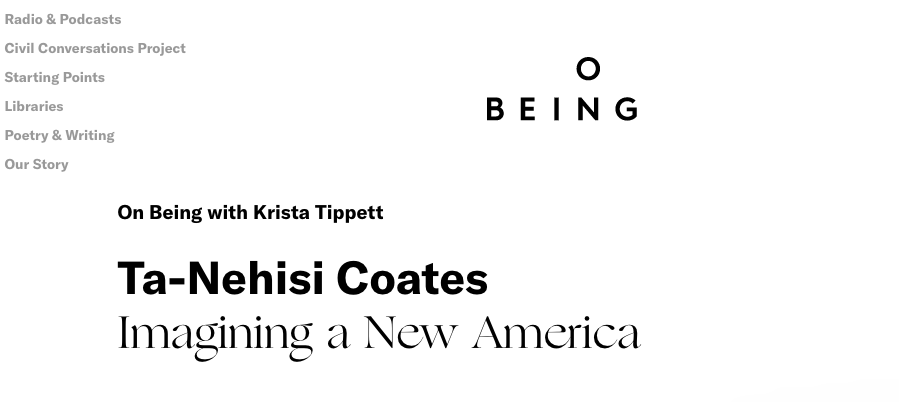Centering and Celebrating Culture in Public Health
Culture is the set of attitudes, values, conventions, goals, social practices, and beliefs of a racial, religious or social group, and their social forms and material traits. In other words, culture is our way of life. When it comes to health, culture shapes our health behaviors, our beliefs and norms about health, and how we organize to advance health and well-being. Further, practicing our own culture is vital to community health and well-being.
This year, the American Public Health Association’s National Public Health Week focuses on centering and celebrating cultures in health. (Check out our 2023 National Public Health Week Toolkit here.) This is an opportunity for those in the public health community to deepen knowledge about the connection between culture and health, center stories from diverse cultural groups, and take action to promote culture and health.
Why Culture Matters
Culture is critically important to public health. Culture shapes our beliefs and behaviors around health and impacts our health outcomes. Culture enables social cohesion, belonging, and the preservation of cultural heritage and traditions across generations. Embracing culture and cultivating a sense of community belonging have positive impacts on health outcomes (see: the Roseto Effect and Native Hope).
Not centering culture in public health and healthcare creates compounding negative impacts for individuals, communities, and society as a whole. Failing to consider individuals’ cultural background and communities’ cultural diversity in health results in inadequate care and service delivery, miscommunication, ineffective interventions, and mistrust (often from the groups who are most impacted). These issues can lead to disparities in health literacy, reduced care access, and worse health outcomes for marginalized groups and underserved communities. Over time, the resulting disparities have led to deep divisions between mainstream public health efforts (which are often better funded but not always more effective) and parallel health systems, which are often more effective at the cultural and community level but rarely receive adequate funding or support. These deep-rooted disparities and divides not only have negative implications for individual and community health, but also weaken our public health system overall.
Respecting, understanding, and embracing culture in public health can help improve health outcomes, strengthen the public health system, and advance health equity. By acknowledging and addressing the unique health needs and challenges of diverse communities, changemakers can begin to break down the historical divides between mainstream systems that are void of cultural practices, and parallel care systems that are built on cultural practices. By understanding how to incorporate cultural factors—languages, values, beliefs, strengths and assets, and historical legacies of resilience and marginalization—public health practitioners can partner with communities to develop culturally-responsive approaches. Culturally-responsive practices and community partnership can reduce health disparities, improve health literacy and engagement, and increase care access and quality.
Understanding Cultural Legacies—Both Good and Bad
To recognize culture as an important factor in public health and begin to improve cultural responsiveness, we must first understand and acknowledge these legacies and their ongoing impact on our world today. Many of our current practices of both cultural exclusion and cultural resilience are rooted in deep legacies of colonialism and racism, as well as resistance and resilience.
Historically, European colonizers and enslavers imposed their own beliefs, systems, and cultures on Indigenous populations around the world. These violent practices, referred to as cultural genocide, suppressed Indigenous knowledge—including health and scientific knowledge that had been practiced for tens of thousands of years—and jeopardized community belonging, cohesion, and well-being. In the United States, this initially took the form of settler colonialism and slavery, before evolving into increasingly complex systems of boarding schools for Indigenous children, forced sterilizations, language policing, Jim Crow laws, and racist carceral systems. This history of colonialism, racism, and cultural exclusion in the U.S. has led to long-standing legacies—beliefs, patterns, systems, and institutional norms—that continue to influence our daily lives. Today in public health this looks like decreased health literacy, care gaps, inaccessibility, and reduced health outcomes for people with marginalized cultural backgrounds, especially Black, Indigenous, and People of Color. To reverse the inequities and begin to heal as a society, we must begin by recognizing these legacies and understanding that the communities most impacted already have solutions.
Since the advent of colonization and slavery, BIPOC communities—especially Indigenous, Black, and Latinx in the United States—have carried legacies of resistance, resilience, and culture-based health through generations. They have actively fought for their inclusion and recognition in public health, as well as their rights to community-based, culturally-embedded care. BIPOC communities have developed and maintained effective parallel care systems, including community-led health programs, culturally-embedded health promotion initiatives, traditional healing practices, and cultural practices leveraged to improve community well-being. By centering culture in health, communities have been able to address unique needs and challenges within their own cultural contexts and traditional knowledge systems, decrease health disparities for themselves, and work toward healing.
Advocates and leaders from these and allied communities have worked to increase awareness, understanding, and inclusion of cultural diversity and responsiveness in mainstream public health settings, including healthcare systems, learning institutions, workplaces, and public policy. Cultural leaders and community advocates offer critical skills and perspectives for advancing health equity not just for the communities they represent, but for all Americans. By recognizing historical legacies and their ongoing impact on our systems, we can support these valuable leaders and work collectively to overturn systemic barriers and improve well-being.
Centering and Celebrating Culture in Public Health
Culture is health! By centering and celebrating culture in public health, we can leverage the fundamental role that culture plays in shaping our individual, community, and societal well-being. Taking action to center culture includes addressing harmful legacies of cultural genocide and exclusion, lifting up the powerful legacies of cultural heritage and resilience, and adopting culturally-responsive practices throughout public health and related fields.
Here are four ways to get started:
1. Deepen our shared knowledge about the connection between culture and health. This includes learning about how culture influences health, cultural humility and competence, and Belonging and Civic Muscle—a vital condition for thriving communities.
How Culture Influences Health
Resource - Website/webpage
Brought to you by Canadian Pediatric Society
The Black History of Public Health: From Legacies of Racism and Resistance to Futures of Equity and Justice
Story
-
 Original
Original
Brought to you by Community Commons
The Storytelling Project Curriculum: Learning About Race and Racism through Storytelling and the Arts
Resource - Guide/handbook
Brought to you by Barnard College
The Spirit Catches You and You Fall Down: A Hmong Child, Her American Doctors, and the Collision of Two Cultures
Resource - Book
Brought to you by FSG
How I Learned To Talk To My Filipino Mom About My Mental Health
Story - Written
Brought to you by NPR
Helping People Talk about Race and Racism: An Open Dialogue Guide
Resource - Webinar
Brought to you by WIN Network
Culture Writes the Script: On the Centrality of Context in Indigenous Evaluation
Resource - Journal Article
First Nations Food Sovereignty Assessment Tool
Tool - Toolkit/toolbox
Brought to you by First Nations Development Insitute
Published on 01/15/2008
Community Tool Box: Enhancing Cultural Competence
Tool
Brought to you by KU Center for Community Health and Development: Community Tool Box
A Playbook for Fostering Hospital-Community Partnerships to Build a Culture of Health
Tool - Toolkit/toolbox
Brought to you by HRET
Tribal Health: Reinvesting in the Indian Health Service
Story
-
 Original
Original
Brought to you by Community Commons
--
WRITTEN BY
Sara Ivey, MPH, MURP (she/her). Sara is an urban planner and public health practitioner based in Portland, Oregon. She is the Project Director for IP3 and a contributor for Community Commons.
Serin Bond-Yancey (they/any). Serin is a Disabled, queer, nonbinary, multiply-neurodivergent, antiracist accomplice. Serin serves as the Executive Director of the Transgender Health and Wellness Center of Washington (Trans-Wa), and works with a diverse portfolio of nonprofits as an Impact, Equity, and Accessibility Consultant.
Related Topics


















.png)













